Geometry | Term 1 Chapter 1 | 3rd Maths - Tangram | 3rd Maths : Term 1 Unit 1 : Geometry
Chapter: 3rd Maths : Term 1 Unit 1 : Geometry
Tangram
Tangram
Create
shapes using tangram pieces
Tangram is a traditional Chinese
puzzle made of a square divided into seven pieces (one parallelogram, one
square and five triangles) that can be arranged to match particular designs. We
can make many figures of animals people and other things. Simplified version of
tangram puzzle is available with five pieces also.
5 pieces tangram
look at 5 pieces of the tangram. cut
the 5 pieces from a paper with help of your elders and try make the given
shapes out of it.
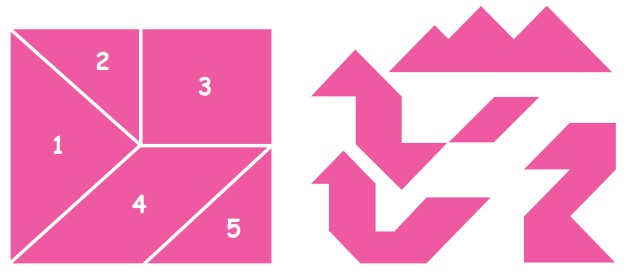
Try this
How many triangles are
there in a five piece tangram set? Are they equal in size?
Answer:
There are three
triangles. 2 and 5 equal in size, but 1 is different in size.
7–pieces tangram
Here is the picture of a seven–piece
tangram. You can cut out these pieces from a paper and put them together in
different ways to make some very interesting shapes.
Teacher’s note: Teacher can enable the children create various
shapes using the tangram sets.
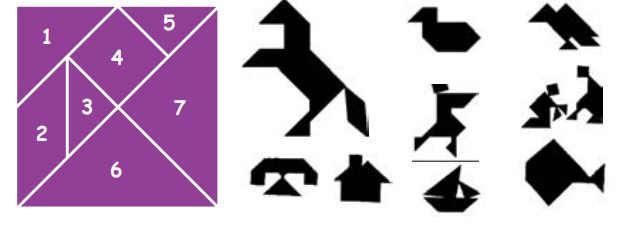
Practice
Number the pieces in
each of these figures according to the numbering in the tangram puzzle.


Tile a given region
using a tile of given shape.
When you fit individual
tiles together with no gaps or overlaps to fill a flat space, you have a tiled
floor.
Observe the pictures

Baked clay in the form
of a shape that is used to cover surfaces is called tile.
Let us Explore
There are some shapes that cannot be
used to make tiling patterns why? what are they? Name them and give reasons.

Answer: opposite side or diagonals must be equal for tiles to join. Some
shapes that cannot be used to make tiling patterns are Circles or ovals. Both
have no opposite side to joint.
Practice
Complete the following
tiling pattern.
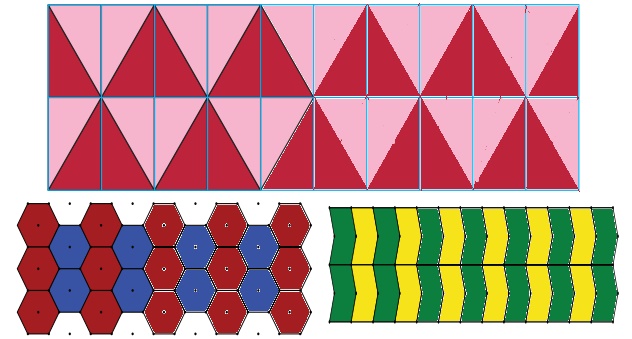
When we repeat individual tiles or
patterns together with no gaps or overlaps to fill a flat space, the
arrangement is called tessellation (or tiling).
Activity 6
Tessellate a new region
using the following shapes:
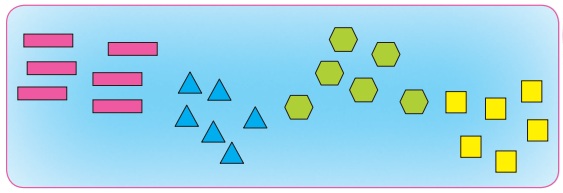
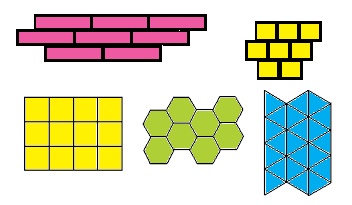
Triangles, squares,
hexagons are the regular polygons tessellate in the plane.
Here

Distinguish between
shapes that tile and that do not tile.
Observe the following pictures that do
not tile.
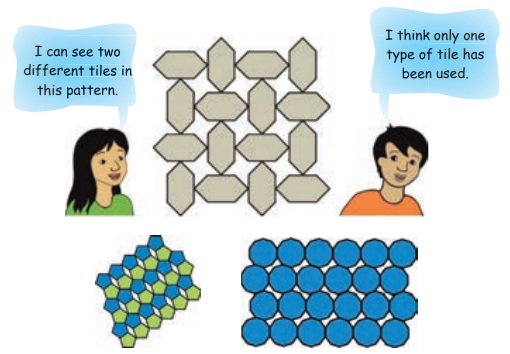
Though pentagons and heptagons are
regular polygons they do not tessellate.
Activity 7
Ask the children to draw
tessellate in the plane region using square and pentagon.
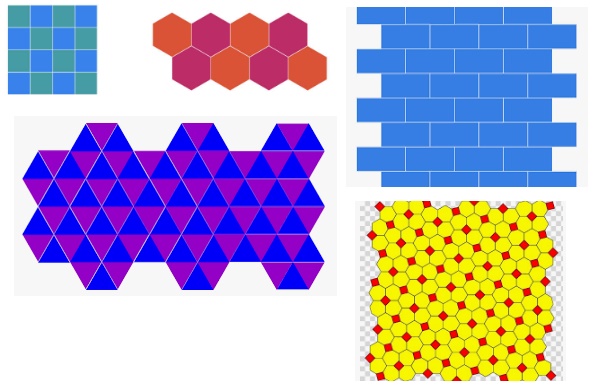
Related Topics